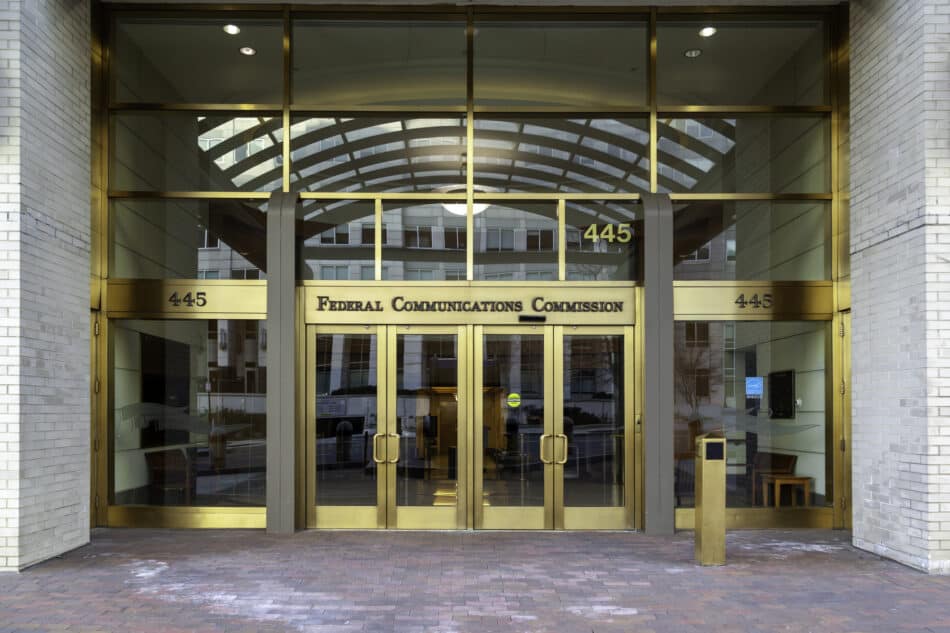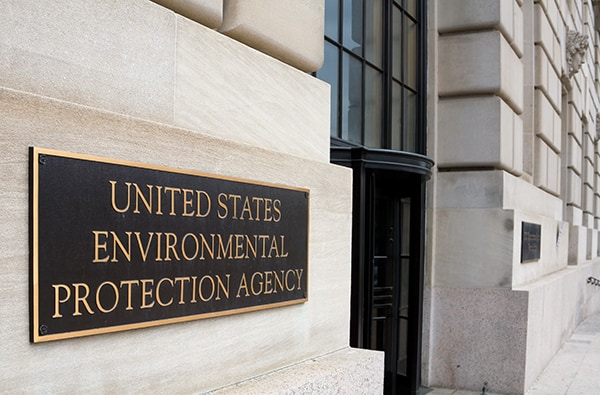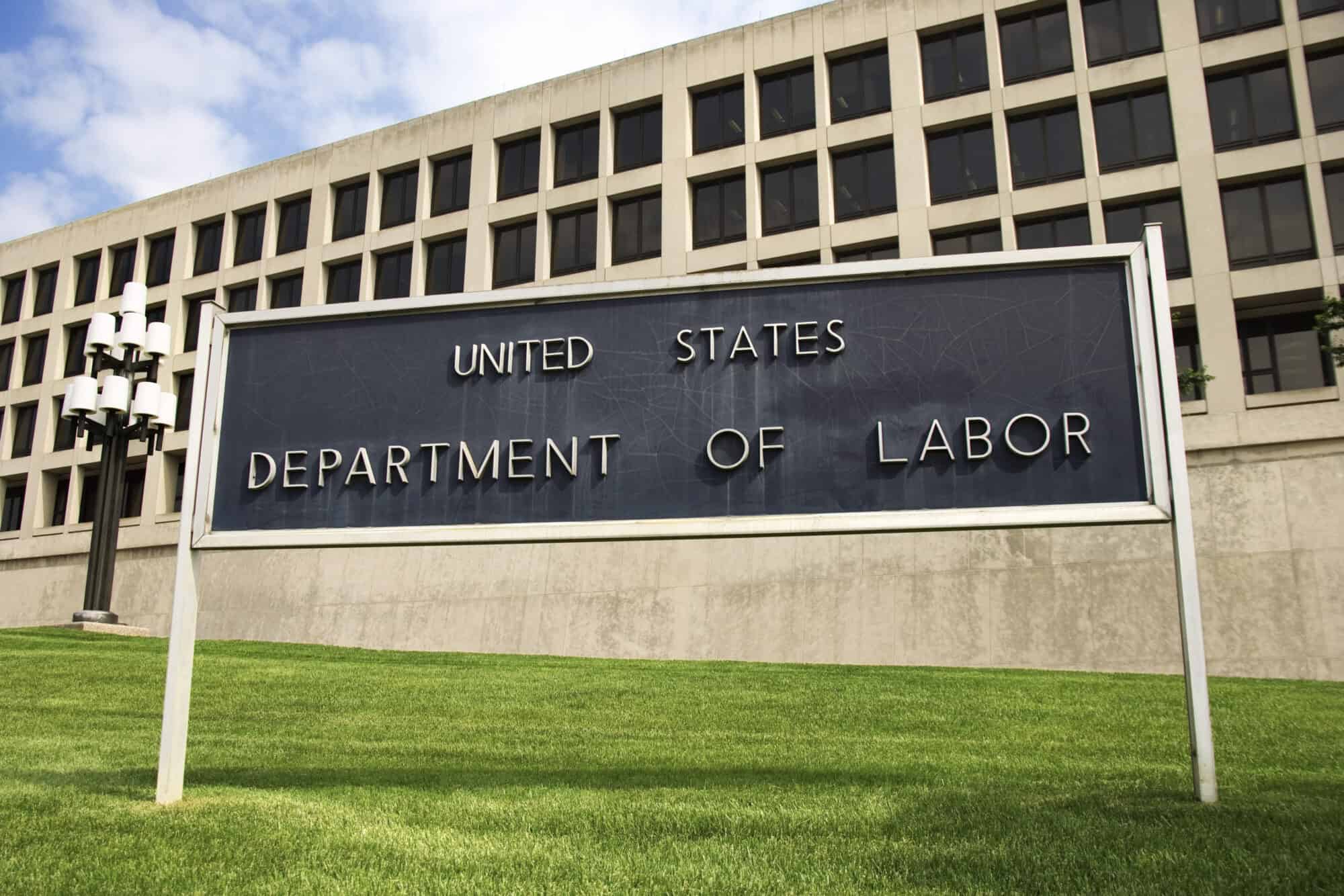EPA’s Power Plant Rule Is Unachievable Without Substantial Permitting Reform
America’s Energy Security Is Threatened
Washington, D.C. – Following the release of the Environmental Protection Agency’s new regulations on greenhouse gas emissions standards for certain power plants, National Association of Manufacturers President and CEO Jay Timmons released the following statement:
“Manufacturers appreciate the EPA removing existing gas plants from its new regulation, following manufacturers’ warnings about the initial proposal. However, the rest of the rule causes serious concern because Congress and the president have not enacted permitting reform—making it impossible to achieve the EPA’s highly aspirational mandates. We call on Congress to get serious by enacting significant and meaningful permitting reform this year. That is essential to ramping up the use of renewables, carbon capture, hydrogen and nuclear, for example, to meet future demand.
“The final rule threatens grid reliability because of the unrealistic timeline for power plants to adopt technologies within the next 10 years that have yet to even be proven at scale. Our nation should be doing everything possible to make sure our families, businesses and manufacturers have a modern, strong and reliable electrical grid, especially at a time when global turmoil threatens our energy security. This new rule does the opposite, creating a threat to our national and economic security that literally could leave Americans in the dark and factories offline. In short, the EPA is rolling the dice with Americans’ electricity and therefore with President Biden’s manufacturing legacy.
“Our industry has made transformational investments in these technologies and clean energy solutions, and we are leading the way in their deployment. The EPA should be partnering with us—not undermining this progress. We will continue to press the administration to achieve a more balanced regulatory framework to help reach our climate goals.”
-NAM-
The National Association of Manufacturers is the largest manufacturing association in the United States, representing small and large manufacturers in every industrial sector and in all 50 states. Manufacturing employs nearly 13 million men and women, contributes $2.89 trillion to the U.S. economy annually and accounts for 53% of private-sector research and development. The NAM is the powerful voice of the manufacturing community and the leading advocate for a policy agenda that helps manufacturers compete in the global economy and create jobs across the United States. For more information about the NAM or to follow us on Twitter and Facebook, please visit www.nam.org.
Thermo Fisher Scientific Helps Manufacturers with PFAS Testing

As government regulation of per- and polyfluoroalkyl substances ramps up worldwide, Thermo Fisher Scientific is seeing a boom in its PFAS testing business.
“We’ve seen an increase in demand from a number of countries in the Americas and in Europe,” said Toby Astill, director of environmental and food safety in chromatography and mass spectrometry at the life sciences giant. “Those regions are driving more discussions around current and future regulations than other regions.”
- In recent weeks, the Environmental Protection Agency has issued several final rules concerning PFAS. These include the first-ever national regulation limiting PFAS in drinking water to near-zero levels and, just last week, the designation of two PFAS chemicals as hazardous substances under the Superfund law.
Writing is on the wall: Thermo Fisher foresaw the need for comprehensive PFAS analysis early on. That’s why it’s been offering clients a full suite of testing capabilities for more than a decade.
- Commonly called “forever chemicals” because they do not break down easily in the environment, PFAS were used widely in everyday products starting in the 1940s, owing to their ability to put out fires and resist grease, corrosion and stains in addition to countless other consumer and industrial applications.
- Using chromatography—“technology that allows lab users to separate and analyze the different components in samples,” according to Astill—Thermo Fisher can “confirm the presence of a specific substance and determine how much is there.”
- The tech is not limited to PFAS, however; it can also detect, down to parts per trillion, the presence of pesticides, heavy metals and other substances, Astill said. And it works on samples of almost anything, including food packaging, water and even air.
Aiding compliance: In coming years, manufacturers may need to analyze their PFAS exposure comprehensively to remain compliant with Toxic Substances Control Act and other international regulations, including those from the EPA, Astill said.
- In 2021, the EPA released its PFAS Strategic Roadmap, addressing the entire lifecycle of PFAS.
- Early last year, the agency proposed the first federal limits on PFAS, instituting maximum allowable levels for six substances in drinking water.
- In January, it finalized an “inactive PFAS” rule, mandating that any company wishing to manufacture or import PFAS chemicals that haven’t been made in years must first get approval from the EPA.
- That’s where testing comes in. “Manufacturers will want to figure out their [level of] PFAS exposure—whether it’s from their supply chains or the products they’re making,” Astill went on. “Because we see an evolving regulatory landscape, manufacturers need to have a baseline of where they are today, in 2024. That way they’re more prepared for regulatory compliance, and if needed, can review data retrospectively to understand trends. In fact, in October 2023, the EPA issued a mandatory one-time reporting rule on most PFAS manufactured or imported into the U.S. since 2011.”
- This February, the EPA proposed two regulations under the Resource Conservation and Recovery Act that added nine PFAS to the list of RCRA hazardous constituents with superfund implications.
Smart legislation: Thermo Fisher recognizes that we still have much to learn about PFAS chemicals, including whether many of them are harmful in the first place and whether there are practicable alternatives. In light of the many unknowns, the company recommends that legislators take a judicious approach to their regulation.
- “We don’t yet know everything about PFAS or all the PFAS” in existence, said Astill. “We need longer-term studies so we understand what we need to regulate and what we need to measure—be it in manufacturing materials or water—before we start regulating more.”
- Forthcoming regulations should also take into account the difficulty and expense of implementing PFAS remediation solutions, she added. “Legislators and regulators should consider the fact that this is not an easy feat for companies.”
Working on an alternative: While Thermo Fisher is not involved directly in inventing alternatives to PFAS, it is working actively with organizations that are doing just that, and it’s optimistic about the outcomes.
- “It’s [been] very difficult to find something with equal properties that is less of a potential health and environmental issue,” Astill said. “But what we have is a lot of intelligent global groups collaborating to share testing data and understand what potential replacement materials make sense—and that’s a tremendous opportunity.”
Manufacturers: Unprecedented Use of CERCLA Authority Will Hamper President’s Manufacturing Vision
Washington, D.C. – Following the release of the Environmental Protection Agency’s rule designating perfluorooctane sulfonic acid, also known as PFOS, and perfluorooctanoic acid, also known as PFOA, as hazardous substances under the Comprehensive Environmental Response, Compensation and Liability Act, National Association of Manufacturers Managing Vice President of Policy Chris Netram released the following statement:
“Manufacturers support efforts to mitigate harmful chemicals from impacting our environment and the health of our nation, but this unprecedented use of CERCLA authority by the EPA will only hamper President Biden’s vision of growing the manufacturing sector in the U.S. The unique and unmatched chemical bond of these compounds means that there are no existing replacements for the critical products they make up.
“The NAM is not opposed to commonsense regulations of PFAS chemicals, and manufacturers are committed to environmental stewardship, while recognizing in many cases we will need to continue to use these chemicals for the foreseeable future. However, designating these compounds as hazardous substances is a blunt, overreaching decision that will make it harder for our industry to create innovative products and jobs.”
-NAM-
The National Association of Manufacturers is the largest manufacturing association in the United States, representing small and large manufacturers in every industrial sector and in all 50 states. Manufacturing employs nearly 13 million men and women, contributes $2.89 trillion to the U.S. economy annually and accounts for 53% of private-sector research and development. The NAM is the powerful voice of the manufacturing community and the leading advocate for a policy agenda that helps manufacturers compete in the global economy and create jobs across the United States. For more information about the NAM or to follow us on Twitter and Facebook, please visit www.nam.org.
NAM: EPA’s National PFAS Drinking Water Standard Threatens Manufacturing

Municipal water systems will soon be required to remove six types of per- and polyfluoroalkyl substances, or PFAS, from drinking water, The New York Times (subscription) reports.
- But the move could backfire and have adverse effects on manufacturers, the NAM said Thursday.
What’s going on: The Environmental Protection Agency on Wednesday announced the first-ever national rule limiting PFAS “to near-zero levels.”
- PFAS are compounds that have been used for decades due to their rare ability to douse fires and resist grease, corrosion and stains. They’re found in everything from semiconductors to medical devices and renewable-energy production equipment.
- But under the new mandate water systems across the U.S. will have three years to monitor the chemicals and a further two years to put into place technology to reduce the compounds’ levels in the water.
- The utilities “would be required to notify the public and reduce contamination if levels exceeded the new standard of 4 parts per trillion for [PFOA and PFOS]. Previously, the agency had advised that drinking water contain no more than 70 parts per trillion of the chemicals.”
The background: The rule comes just over a year after the EPA proposed the first federal limits on two PFAS chemicals, known as PFOA and PFOS.
The funding: The 2021 Bipartisan Infrastructure Law set aside $9 billion to help communities with PFAS removal. The government will make $1 billion of it available to states and territories to help defray the cost of testing and treatment over the next few years.
Higher prices, less security: The new standard is wholly infeasible, NAM Managing Vice President of Policy Chris Netram said, and will lead to cost increases throughout the supply chain and make our national defense more difficult.
- “In many instances, there is no viable alternative for these chemicals, and companies may be forced to change plans dramatically” to comply with the new rule, he said. “The severity of the proposed regulations will mean higher prices for everything—community water and waste systems, medical treatments and electronics. More alarming, the regulations will make it more difficult to produce the equipment our military needs to defend our nation.”
What we’re doing: The NAM is weighing legal options for reversing the final rule, according to Netram.
Senate Approves NLRB “Joint Employer” Repeal Proposal

The Senate this week approved a resolution to repeal the National Labor Relations Board joint employer rule, Reuters (subscription) reports.
What’s going on: In a 50–48 vote Wednesday, the Democrat-controlled Senate passed a Congressional Review Act resolution to block an NLRB “rule that would treat companies as the employers of many of their contract and franchise workers and require them to bargain with those workers’ unions.”
- President Biden pledged to veto the resolution, which the House approved in January. A veto would send the measure back to Congress, where it appears to lack the necessary votes for an override.
- The CRA “allows Congress to repeal agency rules through a majority vote in both houses.” The president must sign the resolution for it to take effect.
- The rule was scheduled to go into effect in February but was blocked by a federal judge in Texas. The NLRB is considering options in response to the decision.
What it would do: “The rule would treat companies as ‘joint employers’ of contract and franchise workers when they have control over key working conditions such as pay, scheduling, discipline and supervision, even if that control is indirect or not exercised.”
Why it would be problematic: The NLRB requirement would lead to confusion about which businesses should be considered employers, “disrupting franchising and routine contracting arrangements,” according to another Reuters article.
The NAM says: The joint employer rule would “harm manufacturers at a time when they need the flexibility and contingency offered through temporary and contract workers to best manage supply chain impacts, demand for manufactured products and other inflationary challenges,” the NAM told the NLRB in December.
Manufacturers: EPA Chemical Decision Will Directly Threaten Our Ability to Innovate, Create Jobs and Defend Our Nation
Washington, D.C. – Following the release of the Environmental Protection Agency’s rulemaking surrounding the monitoring for per- and poly-fluoroalkyl substances (PFAS) in municipal water systems, National Association of Manufacturers Managing Vice President of Policy Chris Netram released the following statement:
“Manufacturers support efforts to remove potentially harmful chemicals from our water systems, but again the EPA has set standards that are not feasible and will directly threaten manufacturers’ ability to invest, innovate and create jobs in America. In many instances, there is no viable alternative for these chemicals, and companies may be forced to change plans dramatically to grow facilities and hire new workers.
“The severity of the proposed regulations will mean higher prices for everything—community water and waste systems, medical treatments and electronics. More alarming, the regulations will make it more difficult to produce the equipment our military needs to defend our nation. The final rule requires water systems to monitor, sample and treat at near zero levels, which will increase costs throughout the supply chain. We are looking at all options to reverse this harmful decision and to slow the regulatory onslaught that directly undermines the president’s efforts to grow manufacturing in the United States.”
-NAM-
The National Association of Manufacturers is the largest manufacturing association in the United States, representing small and large manufacturers in every industrial sector and in all 50 states. Manufacturing employs nearly 13 million men and women, contributes $2.89 trillion to the U.S. economy annually and accounts for 53% of private-sector research and development. The NAM is the powerful voice of the manufacturing community and the leading advocate for a policy agenda that helps manufacturers compete in the global economy and create jobs across the United States. For more information about the NAM or to follow us on Twitter and Facebook, please visit www.nam.org.
Manufacturers Bracing for FCC Vote on Broadband Regulation Rule

The Federal Communications Commission is set for an April 25 vote to bring back “net neutrality,” aiming to reinstate a national regulatory framework for broadband internet services, Fox Business reports. The NAM is speaking out against it.
What is it: “The Biden administration’s rule would regulate broadband services as an essential resource under Title II of the Communications Act.’’
How did we get here: “In 2015, the FCC adopted the Obama administration’s [net] neutrality rules, known as the Open Internet Order. The rules survived a legal challenge with a favorable ruling by a federal appeals court in 2016.”
- In 2017, the Trump administration rolled back broadband regulation with a regulation known as the Restoring Internet Freedom rule, citing it as an impediment to innovation and investment by internet service providers. This decision held up against a legal challenge.
- By 2021, President Biden’s executive order suggested reviving Obama-era broadband rules. With Democrats leading the FCC by October 2023, a formal process began, setting the stage for a conclusive vote.
What would happen next: The NAM sent detailed feedback to the FCC last December, warning that reinstating broadband regulation “will lead to a slowdown in innovation and investment.”
- The NAM’s feedback pointed to the negative impact of the Obama administration’s previous attempt to implement the policy: “In 2015, the last time the FCC sought to regulate broadband under Title II, annual industry capex fell by half a billion dollars.”
- The FCC’s decision exceeds its authority and could also be subject to litigation: “Congress has not explicitly given the commission the authority to regulate broadband and reclassify it in this way; therefore, the FCC lacks authority to do so.”
Our take: “As with the other elements of the regulatory onslaught out of Washington these past few years, this is yet another solution in search of a problem, because we already have an open and fair internet,” said NAM Senior Director of Technology Policy Franck Journoud. “As we’ve warned, this will regulate broadband as if it were the same as rotary telephone service, which would slow innovation. The commission really is doing nothing to answer the question of ‘why’ this policy should be brought back.”
- The NAM has long opposed broadband regulation and went to court to support the FCC’s 2017 decision to repeal the rule. As NAM Chief Legal Officer Linda Kelly said, “Internet-driven technology is at the heart of modern manufacturing, and the FCC’s decision to repeal the onerous 2015 net neutrality rule was a victory for the competitiveness of manufacturers in America.”
The NAM will closely follow the FCC’s latest vote on net neutrality and is prepared to oppose any decision to restore this outdated policy.
Final Heavy-Duty Tailpipe Rule Presents Challenges

The Environmental Protection Agency’s new heavy-duty tailpipe emissions rule is unrealistic and unfeasible, the NAM said Friday.
What’s going on: “The rule—proposed in April 2023—is part of the ‘Clean Trucks Plan’ unveiled in 2023, which includes light-duty tailpipe and nitrogen oxide rules,” Bloomberg Law (subscription) reports.
- “The[se] ‘Phase 3’ standards build on previous phases of a broader regulatory program to stem greenhouse gas emissions from vehicles such as delivery trucks, long-haulers, and buses.”
- The Phase 1 rule was finalized in 2011, and the Phase 2 rule in 2016.
Why it’s problematic: While the new regulation grants automakers more time for implementation than previous versions did—thanks to input from manufacturers and their advocates, including the NAM—it still “fails to reconcile with the realities of current U.S. infrastructure,” according to an NAM social post.
- “Critical permitting reforms to strengthen transmission systems and a technology-neutral approach for manufacturers are essential to reaching U.S. climate goals,” the NAM wrote.
What should be done: Congress must reform the broken U.S. permitting system so we can build the electric vehicle charging station infrastructure required to implement a rule of this magnitude, the NAM said earlier this month.
NAM: OSHA “Walkaround” Rule an Example of Regulatory Onslaught

The U.S. Occupational Safety and Health Administration’s newly finalized “walkaround rule” is unlawful and will not further the agency’s mission of ensuring safe working conditions, the NAM said after the rule’s release.
What’s going on: The long-awaited final rule, which goes into effect May 31, states that “workers may authorize another employee to serve as their representative or select a non-employee,” according to the Department of Labor.
- The policy broadens the basis upon which a non-employee representative may be deemed “reasonably necessary to the conduct of an effective and thorough inspection.”
Why it’s problematic: In addition to having little to do with making workplaces safer, the new policy violates OSHA’s own mandate—and, quite possibly, manufacturers’ constitutional rights, the NAM said.
- The “rule does nothing to advance OSHA’s mission of ensuring safe working conditions,” said NAM Chief Legal Officer Linda Kelly. “Forcing businesses to accommodate third parties with no safety expertise in their facilities infringes on employers’ property rights, invites new liabilities and introduces elements of chaos and disruption to safety inspections. … [It also] clearly violates OSHA’s statutory mandate to conduct inspections within ‘reasonable limits and in a reasonable manner’ with ‘minimum burden’ on employers, and potentially violates manufacturers’ constitutional rights.”
Next steps: The NAM is weighing legal action to reverse the final rule.
Manufacturers: Walkaround Rule Exceeds OSHA’s Authority
Washington, D.C.: Following the release of the Occupational Safety and Health Administration’s recent rulemaking on the Worker Walkaround Representative Designation Process, National Association of Manufacturers Chief Legal Officer Linda Kelly released the following statement:
“Today’s rule does nothing to advance OSHA’s mission of ensuring safe working conditions. Forcing businesses to accommodate third parties with no safety expertise in their facilities infringes on employers’ property rights, invites new liabilities and introduces elements of chaos and disruption to safety inspections.
“By unlawfully expanding third-party access to manufacturers’ worksites, this proposal clearly violates OSHA’s statutory mandate to conduct inspections within ‘reasonable limits and in a reasonable manner’ with ‘minimum burden’ on employers, and potentially violates manufacturers’ constitutional rights. And, for the first time, OSHA would determine who qualifies as an ‘authorized representative’ of employees, which until now has been exclusively recognized as the jurisdiction of the National Labor Relations Board.
“This is another clear example of the federal regulatory onslaught—a proposal that upends settled precedent and ignores the reasoned decision-making required by the Administrative Procedure Act. For these reasons, the NAM will be considering legal action to reverse this incredibly destabilizing decision.”
-NAM-
The National Association of Manufacturers is the largest manufacturing association in the United States, representing small and large manufacturers in every industrial sector and in all 50 states. Manufacturing employs nearly 13 million men and women, contributes $2.85 trillion to the U.S. economy annually and accounts for 53% of private-sector research and development. The NAM is the powerful voice of the manufacturing community and the leading advocate for a policy agenda that helps manufacturers compete in the global economy and create jobs across the United States. For more information about the NAM or to follow us on Twitter and Facebook, please visit www.nam.org.
